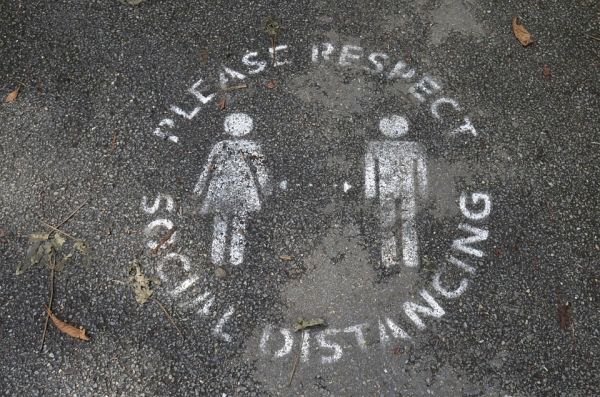Welcome to shopping during the coronavirus pandemic: customers clad in masks, slathered with sanitizer and surrounded by signage urging them to avoid close contact. Despite guidelines plastered on the walls and floors of grocery and retail stores encouraging customers to maintain six-feet of physical distance, many do not. A new study by researchers at the University of Houston Conrad N. Hilton College of Hotel and Restaurant Management identifies two key messaging components — negativity and anthropomorphism, or attributing human characteristics to nonhuman objects — that could improve the persuasiveness of those appeals and trigger compliance.
Adjusting the messaging to stress the negative health outcomes associated with not following physical distancing guidelines, including the possibility of severe sickness or death, could more effectively persuade consumers to comply, according to the study co-authored by UH associate professor Priyanko Guchait and published in The Service Industries Journal. The study found that adding intimidating human attributes to the otherwise invisible coronavirus, such as a scary red face with long sharp teeth and tentacles, significantly strengthens that message.
“We don’t know how the coronavirus looks because we can’t see it, so how can people be afraid of it? Giving it human characteristics and making it look scary strengthens the effect when combined with the negative messaging,” said Guchait.
Read more at University of Houston
Photo Credit: ClaradoodlaK via Pixabay


